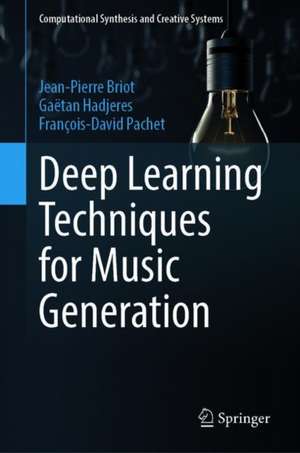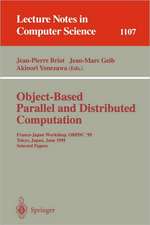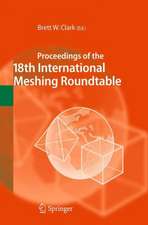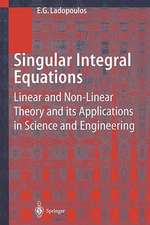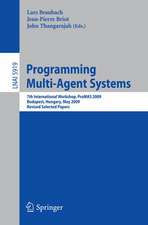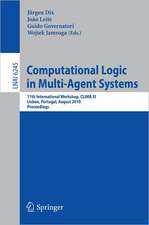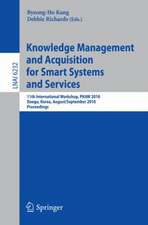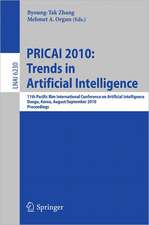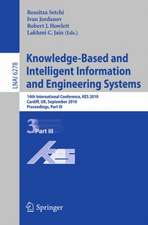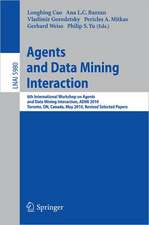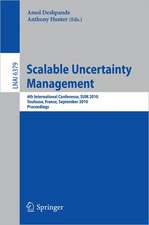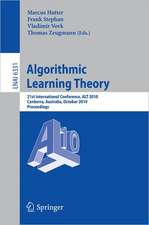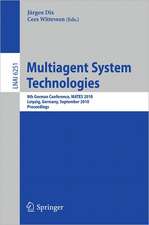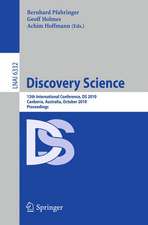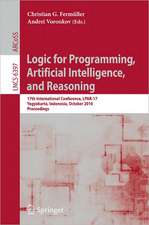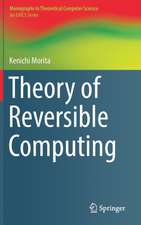Deep Learning Techniques for Music Generation: Computational Synthesis and Creative Systems
Autor Jean-Pierre Briot, Gaëtan Hadjeres, François-David Pacheten Limba Engleză Hardback – 20 noi 2019
The authors have extensive knowledge and experience in all related research, technical, performance, and business aspects. The book is suitable for students, practitioners, and researchers in the artificial intelligence, machine learning, and music creation domains. The reader does not require any prior knowledge about artificial neural networks, deep learning, or computer music. The text is fully supported with a comprehensive table of acronyms, bibliography, glossary, and index, and supplementary material is available from the authors' website.
Preț: 938.01 lei
Preț vechi: 1172.50 lei
-20% Nou
Puncte Express: 1407
Preț estimativ în valută:
179.48€ • 187.90$ • 148.51£
179.48€ • 187.90$ • 148.51£
Carte tipărită la comandă
Livrare economică 05-19 aprilie
Preluare comenzi: 021 569.72.76
Specificații
ISBN-13: 9783319701622
ISBN-10: 3319701622
Pagini: 284
Ilustrații: XXVIII, 284 p. 143 illus., 91 illus. in color.
Dimensiuni: 155 x 235 x 18 mm
Greutate: 0.64 kg
Ediția:1st ed. 2020
Editura: Springer International Publishing
Colecția Springer
Seria Computational Synthesis and Creative Systems
Locul publicării:Cham, Switzerland
ISBN-10: 3319701622
Pagini: 284
Ilustrații: XXVIII, 284 p. 143 illus., 91 illus. in color.
Dimensiuni: 155 x 235 x 18 mm
Greutate: 0.64 kg
Ediția:1st ed. 2020
Editura: Springer International Publishing
Colecția Springer
Seria Computational Synthesis and Creative Systems
Locul publicării:Cham, Switzerland
Cuprins
Introduction.- Method.- Objective.- Representation.- Architecture.- Challenge and Strategy.- Analysis.- Discussion and Conclusion.
Textul de pe ultima copertă
This book is a survey and analysis of how deep learning can be used to generate musical content. The authors offer a comprehensive presentation of the foundations of deep learning techniques for music generation. They also develop a conceptual framework used to classify and analyze various types of architecture, encoding models, generation strategies, and ways to control the generation. The five dimensions of this framework are: objective (the kind of musical content to be generated, e.g., melody, accompaniment); representation (the musical elements to be considered and how to encode them, e.g., chord, silence, piano roll, one-hot encoding); architecture (the structure organizing neurons, their connexions, and the flow of their activations, e.g., feedforward, recurrent, variational autoencoder); challenge (the desired properties and issues, e.g., variability, incrementality, adaptability); and strategy (the way to model and control the process of generation, e.g., single-step feedforward, iterative feedforward, decoder feedforward, sampling). To illustrate the possible design decisions and to allow comparison and correlation analysis they analyze and classify more than 40 systems, and they discuss important open challenges such as interactivity, originality, and structure.
The authors have extensive knowledge and experience in all related research, technical, performance, and business aspects. The book is suitable for students, practitioners, and researchers in the artificial intelligence, machine learning, and music creation domains. The reader does not require any prior knowledge about artificial neural networks, deep learning, or computer music. The text is fully supported with a comprehensive table of acronyms, bibliography, glossary, and index, and supplementary material is available from the authors' website.
The authors have extensive knowledge and experience in all related research, technical, performance, and business aspects. The book is suitable for students, practitioners, and researchers in the artificial intelligence, machine learning, and music creation domains. The reader does not require any prior knowledge about artificial neural networks, deep learning, or computer music. The text is fully supported with a comprehensive table of acronyms, bibliography, glossary, and index, and supplementary material is available from the authors' website.
Caracteristici
Authors' analysis based on five dimensions: objective, representation, architecture, challenge, and strategy Important application of deep learning, for AI researchers and composers Research was conducted within the EU Flow Machines project
